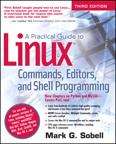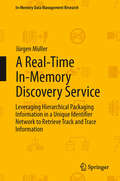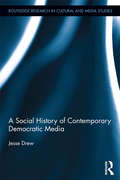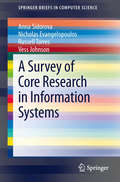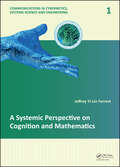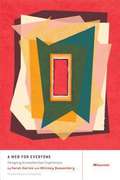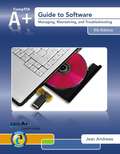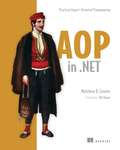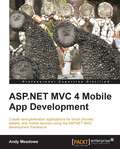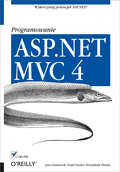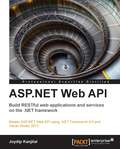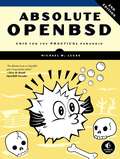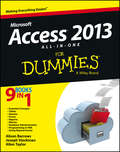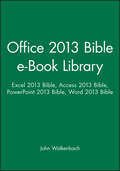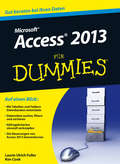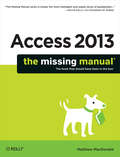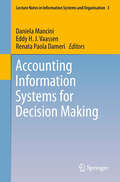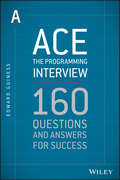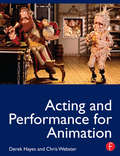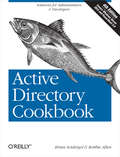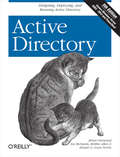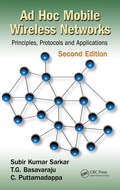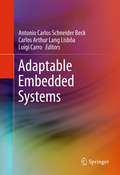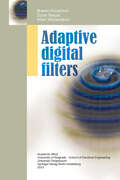- Table View
- List View
A Practical Guide to Linux Commands, Editors, and Shell Programming
by Mark G. Sobell"First Sobell taught people how to use Linux . . now he teaches you the power of Linux. A must-have book for anyone who wants to take Linux to the next level. " -Jon "maddog" Hall, Executive Director, Linux International New Chapters on Python and MySQL-Covers Perl, too! Learn from hundreds of realistic, high-quality examples, and become a true Linux command-line guru! NEW! Covers busybox, Midnight Commander, screen, and sshfs/curlftpf Covers the Mac OS X command line and its unique tools 295-page reference covers 98 utilities, including Mac OS X commands! For use with all popular versions of Linux, including Ubuntu(tm), Fedora(tm), openSUSE(tm), Red Hat®, Debian, Mageia, Mint, Arch, CentOS, and Mac OS X, too! The Most Useful Tutorial and Reference, with Hundreds of High-Quality Examples for Every Popular Linux Distribution Linux is today''s dominant Internet server platform. System administrators and Web developers need deep Linux fluency, including expert knowledge of shells and the command line. This is the only guide with everything you need to achieve that level of Linux mastery. Renowned Linux expert Mark Sobell has brought together comprehensive, insightful guidance on the tools sysadmins, developers, and power users need most, and has created an outstanding day-to-day reference. This title is 100 percent distribution and release agnostic. Packed with hundreds of high-quality, realistic examples, it presents Linux from the ground up: the clearest explanations and most useful information about everything from filesystems to shells, editors to utilities, and programming tools to regular expressions. Use a Mac? You''ll find coverage of the Mac OS X command line, including OS X-only tools and utilities other Linux/UNIX titles ignore. Sobell presents a new MySQL chapter. There''s even an expert introduction to Python-today''s most valuable tool for automating complex, time-consuming administration tasks. A Practical Guide to Linux® Commands, Editors, and Shell Programming, Third Edition, is the only guide to deliver A MySQL chapter to get you started with this ubiquitous relational database management system (RDBMS) A masterful introduction to Python for system administrators and power users New coverage of the busybox single binary collection of utilities, the screen terminal session manager/multiplexer, and the mc (Midnight Commander) textual file manager, plus a new chapter on using ssh for secure communication In-depth coverage of the bash and tcsh shells, including a complete discussion of environment, inheritance, and process locality, plus coverage of basic and advanced shell programming Practical explanations of 98 core utilities, from aspell to xargs, including printf and sshfs/curlftpfs, PLUS Mac OS X-specific utilities from ditto to SetFile Expert guidance on automating remote backups using rsync Dozens of system security tips, including step-by-step walkthroughs of implementing secure communications using ssh and scp Tips and tricks for customizing the shell, including step values, sequence expressions, the eval builtin, and implicit command-line continuation High-productivity editing techniques using vim and emacs A comprehensive, 295-page command reference section covering 98 utilities, including find, grep, sort, and tar Instructions for updating systems using apt-get and yum And much more, including coverage of BitTorrent, gawk, sed, find, sort, bzip2, and regular expressions.
A Real-Time In-Memory Discovery Service: Leveraging Hierarchical Packaging Information in a Unique Identifier Network to Retrieve Track and Trace Information (In-Memory Data Management Research)
by Jürgen MüllerThe research presented in this book discusses how to efficiently retrieve track and trace information for an item of interest that took a certain path through a complex network of manufacturers, wholesalers, retailers, and consumers. To this end, a super-ordinate system called "Discovery Service" is designed that has to handle large amounts of data, high insert-rates, and a high number of queries that are submitted to the discovery service. An example that is used throughout this book is the European pharmaceutical supply chain, which faces the challenge that more and more counterfeit medicinal products are being introduced. Between October and December 2008, more than 34 million fake drug pills were detected at customs control at the borders of the European Union. These fake drugs can put lives in danger as they were supposed to fight cancer, take effect as painkiller or antibiotics, among others. The concepts described in this book can be adopted for supply chain management use cases other than track and trace, such as recall, supply chain optimization, or supply chain analytics.
A Social History of Contemporary Democratic Media (Routledge Research in Cultural and Media Studies)
by Jesse DrewThe last few decades have helped dispel the myth that media should remain driven by high-end professionals and market share. This book puts forward the concept of "communications from below" in contrast to the "globalization from above" that characterizes many new developments in international organization and media practices. By examining the social and technological roots that influence current media evolution, Drew allows readers to understand not only the Youtubes and Facebooks of today, but to anticipate the trajectory of the technologies to come. Beginning with a look at the inherent weaknesses of the U.S. broadcasting model of mass media, Drew outlines the early 1960s and 1970s experiments in grassroots media, where artists and activists began to re-engineer electronic technologies to target local communities and underserved audiences. From these local projects emerged national and international communications projects, creating production models, social networks and citizen expectations that would challenge traditional means of electronic media and cultural production. Drew’s perspective puts the social and cultural use of the user at the center, not the particular media form. Thus the structure of the book focuses on the local, the national, and the global desire for communications, regardless of the means.
A Survey of Core Research in Information Systems (SpringerBriefs in Computer Science)
by Anna Sidorova Nicholas Evangelopoulos Russell Torres Vess JohnsonThe Information Systems (IS) discipline was founded on the intersection of computer science and organizational sciences, and produced a rich body of research on topics ranging from database design and the strategic role of IT to website design and online consumer behavior. In this book, the authors provide an introduction to the discipline, its development, and the structure of IS research, at a level that is appropriate for emerging and current IS scholars. Guided by a bibliometric study of all research articles published in eight premier IS research journals over a 20-year period, the authors identify and present the top 51 IS research topics. For each topic, they provide a brief overview, time trends, and references to related influential research works. The topics are organized into an IS research framework that includes research on the IT artifact and IS development, IT and organizations, IT and individuals, IT and markets, and IT for teamwork and collaboration.
A Systemic Perspective on Cognition and Mathematics (Communications in Cybernetics, Systems Science and Engineering)
by Jeffrey Yi-Lin ForrestThis book is devoted to the study of human thought, its systemic structure, and the historical development of mathematics both as a product of thought and as a fascinating case analysis. After demonstrating that systems research constitutes the second dimension of modern science, the monograph discusses the yoyo model, a recent ground-breaking deve
A Web for Everyone
by Whitney Quesenbery Sarah HortonIf you are in charge of the user experience, development, or strategy for a web site, A Web for Everyone will help you make your site accessible without sacrificing design or innovation. Rooted in universal design principles, this book provides solutions: practical advice and examples of how to create sites that everyone can use.
A+ Guide to Software: Managing, Maintaining, And Troubleshooting (Sixth Edition)
by Jean AndrewsNIMAC-sourced textbook
ACCESSIBLE TECHNOLOGIES TO FACILITATE READING
by The Xavier's Resource Center for the Visually ChallengedThis information booklet has been prepared as a supplementary tool for the Reading Without Seeing seminars conducted across the country which focus on live demonstration of assistive technologies for those with visual impairment. It aims at providing awareness on various assistive technology devices and its effective use in different scenarios.
AOP in .NET: Practical Aspect-Oriented Programming
by Matthew GrovesSummaryAOP in .NET introduces aspect-oriented programming to .NET developers and provides practical guidance on how to get the most benefit from this technique in your everyday coding. The book's many examples concentrate on modularizing non-functional requirements that often sprawl throughout object-oriented projects. Even if you've never tried AOP before, you'll appreciate the straightforward introduction using familiar C#-based examples. AOP tools for .NET have now reached the level of practical maturity Java developers have relied on for many years, and you'll explore the leading options, PostSharp, and Castle DynamicProxy.About the TechnologyCore concerns that cut across all parts of your application, such as logging or authorization, are difficult to maintain independently. In aspect-oriented programming (AOP) you isolate these cross-cutting concerns into their own classes, disentangling them from business logic. Mature AOP tools like PostSharp and Castle DynamicProxy now offer .NET developers the level of support Java coders have relied on for years.About this BookAOP in .NET introduces aspect-oriented programming and provides guidance on how to get the most practical benefit from this technique. The book's many examples concentrate on modularizing non-functional requirements that often sprawl throughout object-oriented projects. You'll appreciate its straightforward introduction using familiar C#-based examples.This book requires no prior experience with AOP. Readers should know C# or another OO language.What's InsideClear and simple introduction to AOPMaximum benefit with minimal theoryPostSharp and Castle DynamicProxyPurchase of the print book includes a free eBook in PDF, Kindle, and ePub formats from Manning Publications.About the AuthorMatthew D. Groves is a developer with over ten years of professional experience working with C#, ASP.NET, JavaScript, and PHP.Table of ContentsPART 1 GETTING STARTED WITH AOPIntroducing AOPAcme Car RentalPART 2 THE FUNDAMENTALSOF AOPCall this instead: intercepting methodsBefore and after: boundary aspectsGet this instead: intercepting locationsUnit testing aspectsPART 3 ADVANCED AOP CONCEPTSAOP implementation typesUsing AOP as an architectural toolAspect composition: example and execution
ASP.NET MVC 4 Mobile App Development
by Andy MeadowsA step-by-step tutorial to get acquainted with the ASP.NET MVC4 Framework and its features in order to discover how to develop web applications using them.This book is targeted at people who are familiar with C# development on the .NET platform and are interested in web development with the ASP.NET development framework. No prior web or mobile development experience is required
ASP.NET MVC 4. Programowanie
by Hrusikesh Panda Jess Chadwick Todd SnyderWykorzystaj potencja? ASP.NET! Platforma ASP.NET to g?ówny konkurent j?zyka Java w zakresie tworzenia aplikacji internetowych oraz zaawansowanych stron internetowych. Jej autorzy zadbali o to, aby ka?da kolejna wersja u?atwia?a prac? programistom w coraz szerszym zakresie. Programi?ci to doceniaj? i ASP.NET znajduje si? w?ród j?zyków najcz??ciej wybieranych przy tworzeniu zaawansowanych projektów.Je?eli chcesz w pe?ni wykorzysta? potencja? ASP.NET MVC 4, przyda Ci si? wyj?tkowa ksi??ka. Ta, któr? trzymasz w r?kach, bez w?tpienia taka jest! W trakcie lektury poznasz niuanse architektury MVC oraz dowiesz si?, jak tworzy? sieciowe API. Ponadto wykorzystasz Entity Framework do wydajnego korzystania z baz danych oraz zaznajomisz si? ze sposobami na równoleg?e przetwarzanie ??da?. Szczególn? uwag? powiniene? zwróci? na rozdzia? po?wi?cony zapewnieniu jako?ci — wykorzystanie testów automatycznych znacz?co u?atwi Ci ?ycie! Ksi??ka ta powinna trafi? na podr?czn? pó?k? ka?dego programisty ASP.NET!Si?gnij po t? ksi??k? i:poznaj wzorzec MVCstwórz zaawansowane Web APIzobacz, jak uatrakcyjni? Twoj? aplikacj? dzi?ki technologii AJAXzbuduj bezpieczn? aplikacj?zbuduj system testów automatycznych oraz ci?g?ej integracji Poznaj i wykorzystaj mo?liwo?ci ASP.NET w Twoim projekcie!
ASP.NET Web API: Build RESTful web applications and services on the .NET framework
by Joydip KanjilalThis book is a step-by-step, practical tutorial with a simple approach to help you build RESTful web applications and services on the .NET framework quickly and efficiently.This book is for ASP.NET web developers who want to explore REST-based services with C# 5. This book contains many real-world code examples with explanations whenever necessary. Some experience with C# and ASP.NET 4 is expected.
Absolute OpenBSD, 2nd Edition: Unix for the Practical Paranoid
by Michael W. LucasOpenBSD, the elegant, highly secure Unix-like operating system, is widely used as the basis for critical DNS servers, routers, firewalls, and more. This long-awaited second edition of Absolute OpenBSD maintains author Michael Lucas's trademark straightforward and practical approach that readers have enjoyed for years. You'll learn the intricacies of the platform, the technical details behind certain design decisions, and best practices, with bits of humor sprinkled throughout. This edition has been completely updated for OpenBSD 5.3, including new coverage of OpenBSD's boot system, security features like W^X and ProPolice, and advanced networking techniques.You'll learn how to: –Manage network traffic with VLANs, trunks, IPv6, and the PF packet filter–Make software management quick and effective using the ports and packages system–Give users only the access they need with groups, sudo, and chroots–Configure OpenBSD's secure implementations of SNMP, DHCP, NTP, hardware sensors, and more–Customize the installation and upgrade processes for your network and hardware, or build a custom OpenBSD releaseWhether you're a new user looking for a complete introduction to OpenBSD or an experienced sysadmin looking for a refresher, Absolute OpenBSD, 2nd Edition will give you everything you need to master the intricacies of the world's most secure operating system.
Access 2013 All-in-One For Dummies
by Alison Barrows Joseph C. Stockman Allen G. TaylorGet started with the new Access 2013 with this impressive all-in-one reference!Microsoft Access allows you to store, organize, view, analyze, and share data; the new release enables you to build even more powerful, custom database solutions that integrate with the web and enterprise data sources. This compilation of nine indispensible minibooks is exactly what you need to get up to speed on the latest changes to Access. This easy-to-understand resource provides both new and experienced Access users with invaluable advice for connecting Access to SQL Server, manipulating data locally, getting up to speed on the latest features of Access 2013, creating queries and macros, and much more. From the basics to advanced functions, this book is what you need to make Access more accessible. Shows you how to store, organize, view, analyze, and share data using Access 2013Includes nine minibooks that cover such topics as database design, tables, queries, forms, reports, macros, database administration, securing data, programming with Visual Basic for Applications (VBA), and using Access with the web Helps you build database solutions that integrate with the web and other enterprise data solutionsOffers plenty of techniques, tips, and tricks to help you get the most out of Access This all-in-one guide offers you access to all things Access 2013!
Access 2013 Bible
by Michael Alexander Dick KusleikaA comprehensive reference to the updated and new features of Access 2013As the world's most popular database management tool, Access enables you to organize, present, analyze, and share data as well as build powerful database solutions. However, databases can be complex. That's why you need the expert guidance in this comprehensive reference. Access 2013 Bible helps you gain a solid understanding of database purpose, construction, and application so that whether you're new to Access or looking to upgrade to the 2013 version, this well-rounded resource provides you with a thorough look at everything Access can do. Explains how to create tables, manipulate datasheets, and work with multiple tablesTeaches you how to apply the seven-step design method to build databases that are tailored to your needsCovers building forms with wizards, creating bound and unbound forms, and adding data validationShows you ways to automate query parameters, create functions and subroutines, and add programmed error routinesFeatures a bonus website with content that contains all source code from the book as well as bonus shareware, freeware, trial, demo, and evaluation programsIf you are looking for a comprehensive book on all things Access, look no further than Access 2013 Bible.
Access 2013 für Dummies (Für Dummies)
by Ken Cook Laurie A. UlrichAccess 2013 bietet Ihnen zahlreiche Möglichkeiten, Ihre Daten in übersichtlichen Datenbanken perfekt zu organisieren und im Handumdrehen aussagekräftige Berichte zu entwickeln. Doch um dieser Funktionsvielfalt Herr zu werden, benötigen Sie einen zuverlässigen Begleiter. Laurie Ulrich Fuller und Ken Cook führen Sie Schritt für Schritt durch den Datenbank-Dschungel und erklären Ihnen, was Sie bei der Planung Ihrer ersten Datenbank berücksichtigen sollten, wie Sie ein geeignetes Grundgerüst für Ihre Daten bauen und auf welchen Wegen Sie unterschiedliche Abfragen erstellen können.
Access 2013: The Missing Manual (The\missing Manual Ser.)
by Matthew MacDonaldUnlock the secrets of Access 2013 and discover how to use your data in creative ways. With this book’s easy step-by-step instructions, you’ll learn how to build and maintain a full-featured database and even turn it into a web app. You also get tips and practices from the pros for good database design—ideal whether you’re using Access for business, school, or at home.The important stuff you need to knowBuild a database with ease. Organize and update lists, documents, catalogs, and other types of information.Create your own web app. Let your whole team work on a database in the cloud.Share your database on a network. Link your Access database to SQL Server or SharePoint.Customize the interface. Make data entry a breeze by building your own templatesFind what you need fast. Search, sort, and summarize huge amounts of data in minutes.Put your info to use. Turn raw info into well-formatted printed reports.Dive into Access programming. Automate complex tasks and solve common challenges.
Accounting Information Systems for Decision Making (Lecture Notes in Information Systems and Organisation #3)
by Daniela Mancini Renata Paola Dameri Eddy H. VaassenThis book contains a collection of research papers on accounting information systems including their strategic role in decision processes, within and between companies. An accounting system is a complex system composed of a mix of strictly interrelated elements such as data, information, human resources, IT tool, accounting models and procedures. Accounting information systems are often considered the instrument by default for accounting automation. This book aims to sketch a clear picture of the current state of AIS research, including design, acceptance and reliance, value-added decision making, interorganizational links, and process improvements. The contributions in this volume emphasize that AIS has grown into a powerful strategic tool. The book provides evidence for this observation by examining a wide range of current issues ranging from theory development in AIS to practical applications of accounting information systems. In particular it focuses on themes of growing interest in the realm of XBRL and Financial Reporting, Management Information Systems, IT/IS Audit and IT/IS Compliance. The book will be of interest to financial and managerial accountants and IT/IS practitioners, including information systems managers and consultants.
Ace the Programming Interview
by Edward GuinessBe prepared to answer the most relevant interview questions and land the job Programmers are in demand, but to land the job, you must demonstrate knowledge of those things expected by today's employers. This guide sets you up for success. Not only does it provide 160 of the most commonly asked interview questions and model answers, but it also offers insight into the context and motivation of hiring managers in today's marketplace. Written by a veteran hiring manager, this book is a comprehensive guide for experienced and first-time programmers alike. Provides insight into what drives the recruitment process and how hiring managers think Covers both practical knowledge and recommendations for handling the interview process Features 160 actual interview questions, including some related to code samples that are available for download on a companion website Includes information on landing an interview, preparing a cheat-sheet for a phone interview, how to demonstrate your programming wisdom, and more Ace the Programming Interview, like the earlier Wiley bestseller Programming Interviews Exposed, helps you approach the job interview with the confidence that comes from being prepared.
Acting and Performance for Animation
by Derek HayesCharacter animation involves more than the principles of animation and the mechanics of motion. Unique, believeable characters that think, feel and captivate your audience are ones that involve emotion, performance, personality, acting and story. Successful animators balance all of these elements within a single character and narrative. With Acting and Performance for Animation, discover how to create dynamic, dramatic performances and believeable character interaction. An invaluable resource for animators, Acting and Performance for Animators is a practical guide to the variety of performance techniques relevant to animators. Develop believable character interactions with chapters detailing the principles of performance, performance types, character emotion and personality, physical and psychological performance, and scene composition. Analyze scripts, sound,acting, action and performance with the practical hints and tips, hands-on assignments and animated examples featured in an extensive guide for animators working in film, TV, games and commercials. Explore different performance techniques based upon the experiences of seasoned animators with case studies featuring John Lasseter, Ray Harryhausen, Nick Park, Joanna Quinn. Expand your own performance techniques with the accompanying DVD which will feature live action reference shorts, production stills, animated examples, and further hands-on assignments.
Active Directory Cookbook: Solutions for Administrators & Developers (Cookbooks (o'reilly) Ser.)
by Robbie Allen Brian SvidergolTake the guesswork out of deploying, administering, and automating Active Directory. With hundreds of proven recipes, the updated edition of this popular cookbook provides quick, step-by-step solutions to common (and not so common) problems you might encounter when working with Microsoft’s network directory service.This fourth edition includes troubleshooting recipes for Windows Server 2012, Windows 8, and Exchange 2013, based on valuable input from Windows administrators. You’ll also find quick solutions for the Lightweight Directory Access Protocol (LDAP), Active Directory Lightweight Directory Services (AD LDS), multi-master replication, DNS, Group Policy, and many other features.Manage new AD features, such as the Recycle Bin, Group Managed Service Accounts, and fine-grained password policiesWork with AD from the command line and use Windows PowerShell to automate tasksRemove and create forests, domains, and trustsCreate groups, modify group scope and type, and manage membershipDelegate control, view and modify permissions, and handle Kerberos ticketsImport and export data with LDAP Data Interchange Format (LDIF)Synchronize multiple directories and enforce data integrity within a single or multiple storesBack up AD, and perform authoritative and non-authoritative restores
Active Directory: Designing, Deploying, and Running Active Directory
by Alistair G. Lowe-Norris Robbie Allen Joe Richards Brian DesmondOrganize your network resources by learning how to design, manage, and maintain Active Directory. Updated to cover Windows Server 2012, the fifth edition of this bestselling book gives you a thorough grounding in Microsoft’s network directory service by explaining concepts in an easy-to-understand, narrative style.You’ll negotiate a maze of technologies for deploying a scalable and reliable AD infrastructure, with new chapters on management tools, searching the AD database, authentication and security protocols, and Active Directory Federation Services (ADFS). This book provides real-world scenarios that let you apply what you’ve learned—ideal whether you’re a network administrator for a small business or a multinational enterprise.Upgrade Active Directory to Windows Server 2012Learn the fundamentals, including how AD stores objectsUse the AD Administrative Center and other management toolsLearn to administer AD with Windows PowerShellSearch and gather AD data, using the LDAP query syntaxUnderstand how Group Policy functionsDesign a new Active Directory forestExamine the Kerberos security protocolGet a detailed look at the AD replication process
Ad Hoc Mobile Wireless Networks: Principles, Protocols, and Applications, Second Edition
by Subir Kumar Sarkar T.G. Basavaraju C. PuttamadappaThe military, the research community, emergency services, and industrial environments all rely on ad hoc mobile wireless networks because of their simple infrastructure and minimal central administration. Now in its second edition, Ad Hoc Mobile Wireless Networks: Principles, Protocols, and Applications explains the concepts, mechanism, design, and
Adaptable Embedded Systems
by Luigi Carro Carlos Arthur Lang Lisbôa Antonio Carlos BeckAs embedded systems become more complex, designers face a number of challenges at different levels: they need to boost performance, while keeping energy consumption as low as possible, they need to reuse existent software code, and at the same time they need to take advantage of the extra logic available in the chip, represented by multiple processors working together. This book describes several strategies to achieve such different and interrelated goals, by the use of adaptability. Coverage includes reconfigurable systems, dynamic optimization techniques such as binary translation and trace reuse, new memory architectures including homogeneous and heterogeneous multiprocessor systems, communication issues and NOCs, fault tolerance against fabrication defects and soft errors, and finally, how one can combine several of these techniques together to achieve higher levels of performance and adaptability. The discussion also includes how to employ specialized software to improve this new adaptive system, and how this new kind of software must be designed and programmed.
Adaptive Digital Filters
by Zoran Banjac Milan Milosavljević Branko Kovačević"Adaptive Digital Filters" presents an important discipline applied to the domain of speech processing. The book first makes the reader acquainted with the basic terms of filtering and adaptive filtering, before introducing the field of advanced modern algorithms, some of which are contributed by the authors themselves. Working in the field of adaptive signal processing requires the use of complex mathematical tools. The book offers a detailed presentation of the mathematical models that is clear and consistent, an approach that allows everyone with a college level of mathematics knowledge to successfully follow the mathematical derivations and descriptions of algorithms. The algorithms are presented in flow charts, which facilitates their practical implementation. The book presents many experimental results and treats the aspects of practical application of adaptive filtering in real systems, making it a valuable resource for both undergraduate and graduate students, and for all others interested in mastering this important field.
